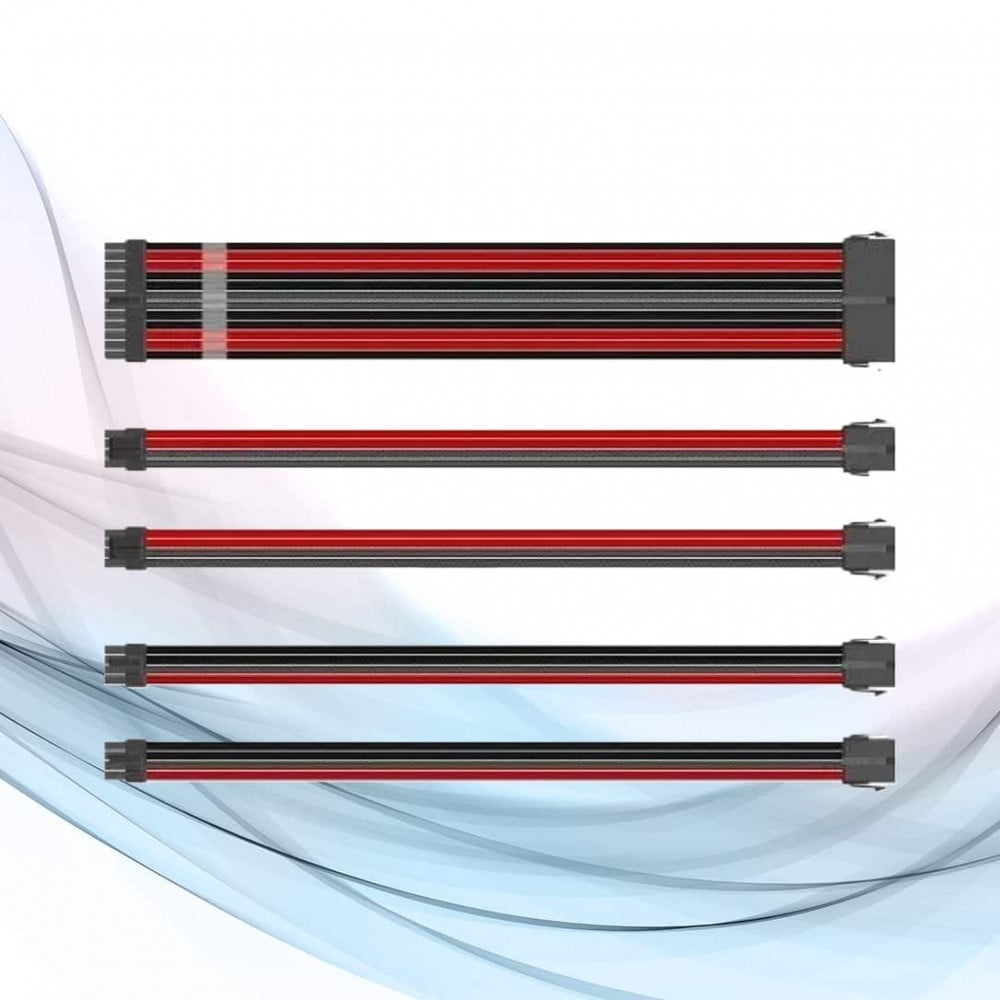Learn about cables with us
- Cables are connectors used to transmit electrical signals or data between different devices. They are one of the most important and indispensable computer accessories .
- They typically consist of electrical conductors, insulators, and an outer sheath. The cable's design and materials vary depending on its intended use and technical requirements. For example, copper cables are used to transmit audio and video signals, while fiber optic cables are used to transmit high-speed data.
- It was first manufactured in the 19th century, but did not gain popularity until the beginning of the 20th century, when demand for it increased due to the development of communications and its use in telephones, television, the Internet, and computers.
- It transmits electrical signals and data between different devices, using electrical conductors, insulators, and an outer casing.
- Cable design and materials vary depending on their intended use. Cables are therefore classified according to the type of signals they transmit, the materials they use, and other factors.
- These cables are available in various lengths and sizes and are used in a wide range of applications.
- They are considered an essential component of modern communications, used to transmit electrical signals and data between various devices . Cables come in a wide range of types, sizes, and shapes, and vary in their intended purpose and performance requirements.
The most popular types used in the world today:
- Network cables: used to transfer data between different devices in local and wide area networks.
- Telephone cables: used to transmit audio signals between different phones.
- Power cables: used to transmit electrical current between different sources and loads.
- Fiber optic cables: used to transmit data at high speed over optical fibers.
- TV cables: used to transmit TV signals between different devices .
Cables are manufactured using various technologies, and the appropriate cable must be selected for its intended purpose. Some of the most important factors to consider when selecting a cable include:
- Required cable length.
- Required data transfer speed.
- The quality of the materials used in the cable.
- The cable complies with industrial and technical standards.
In general, cables are an essential component of modern communications and are used in a wide range of applications. Various factors must be considered when selecting the appropriate cable for its intended purpose, as this significantly impacts system performance.
Benefits of cables:
- Cables have excellent performance in transmitting electrical signals and data, helping to improve sound and picture quality and increase data transfer speed.
What materials are used in cable manufacturing?
- The materials used in the manufacture of cables vary. Depending on their intended purpose and the application for which they will be used. Although there is a wide range of materials that can be used in cable manufacturing, common materials used in cable manufacturing include:
2- Copper:
Copper is used in the manufacture of electrical and signal conductors in cables, as it has good resistance to corrosion, chemical erosion, and heat.
3- Aluminum:
Aluminum is used in the manufacture of power cables used to transmit electrical current over long distances, as it is lightweight and able to withstand high temperatures.
4- Optical fibers:
Optical fibers are used in the manufacture of backup cables and high-speed data transmission, as they are characterized by their ability to transmit optical signals over long distances.
5- Rubber and Polyvinyl Chloride (PVC):
Rubber and PVC are used in the manufacture of external cable insulation, as they are characterized by their good resistance to abrasion, heat, and chemicals.
6- Minerals:
Steel, aluminum, and copper are used to manufacture the wires and inner cables, as they are characterized by hardness, durability, and corrosion resistance.
7- Plastic:
Plastic is used in the outer cable sheathing, as it is resistant to corrosion, heat, and chemicals.
Each material has its own advantages, disadvantages, and performance levels in handling different conditions.
What are the advantages and disadvantages of fiber optic cables?
- Fiber optic cables have many advantages over traditional cables used to transmit data, audio, and video signals. These advantages include:
1- High data transfer capacity:
Fiber optic cables allow for the transmission of large amounts of data at very high speeds, making them ideal for use in large networks and data centers.
2- Resistance to electromagnetic interference:
Fiber optic cables are not affected by electromagnetic interference that can affect signal quality in conventional cables.
3- Corrosion resistance:
Fiber optic cables are corrosion resistant, making them ideal for use in harsh environments.
4- Small size:
Fiber optic cables are small in size, making them ideal for use over long distances and in locations where precise connections are required.
5- Security:
Fiber optic cables are very safe, as they do not produce electromagnetic interference and cannot cause fires.
However, there are some potential disadvantages to fiber optic cables, including:
1- The price:
The cost of fiber optic cables is much higher than that of conventional cables, and this can be a barrier to general use.
2- Maintenance:
Maintenance of fiber optic cables can be more complex than traditional cables, requiring skilled and experienced engineers and technicians.
3- Allergy:
Fiber optic cables are more delicate than conventional cables and require careful handling during installation and operation to avoid damage.
Finally, fiber optic cables have many features that make them ideal for use in various applications, and their potential drawbacks are an acceptable challenge given the many benefits they offer.

